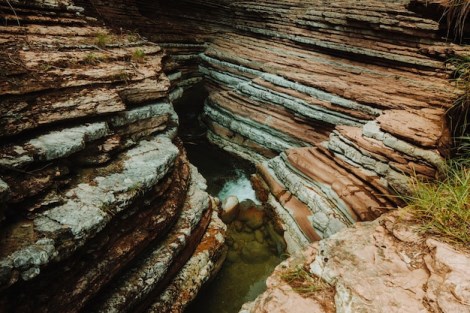

The Loch Ness Monster is a legendary creature said to inhabit Scotland’s Loch Ness.
Sightings of the Loch Ness Monster date back to the 6th century AD.
The Loch Ness Monster is often described as a large, aquatic creature with a long neck and humps.
The Loch Ness Monster has become an iconic figure in Scottish folklore.
Despite extensive research and numerous expeditions, concrete evidence of the Loch Ness Monster’s existence remains elusive.
The Loch Ness Monster is believed by some to be a surviving plesiosaur, a type of prehistoric marine reptile.
The first modern sighting of the Loch Ness Monster occurred in 19
8. The Loch Ness Monster is said to have a reputation for shyness, making it difficult to capture on film.
Numerous photographs and videos claiming to show the Loch Ness Monster have been debunked as hoaxes over the years.
The scientific community remains skeptical about the existence of the Loch Ness Monster.
In 2018, a team of scientists conducted a comprehensive environmental DNA survey of Loch Ness to try and find evidence of the monster’s existence.
Loch Ness is the largest freshwater lake in Scotland and holds more water than all the lakes in England and Wales combined.
The dark and peaty waters of Loch Ness make it difficult to see beneath the surface, adding to the mystery surrounding the monster.
The Loch Ness Monster has inspired numerous books, movies, and documentaries.
A 2014 film titled The Loch Ness Monster’s Lair explored the legend of the creature.
The origins of the Loch Ness Monster myth can be traced back to ancient Celtic folklore.
The Loch Ness Monster has become a popular tourist attraction, with thousands of visitors flocking to the lake each year in hopes of catching a glimpse of the creature.
The first recorded modern sighting of the Loch Ness Monster occurred in 1933 when a couple claimed to have seen a large prehistoric creature swimming in the lake.
The Loch Ness Monster has been affectionately nicknamed Nessie by locals and enthusiasts.
Numerous sonar scans and underwater expeditions have failed to find definitive evidence of the monster’s existence.
Some skeptics believe that the Loch Ness Monster could possibly be a misidentified large fish or otter.
The legend of the Loch Ness Monster continues to captivate people’s imaginations around the world.
The annual Loch Ness Monster Festival celebrates the creature and its significance to Scottish culture.
Several theories have been proposed to explain the Loch Ness Monster sightings, including floating logs, large eels, and even swimming elephants.
In 2018, a leading scientist argued that the Loch Ness Monster could be a giant eel after analyzing various pieces of evidence.
The Loch Ness Monster is often portrayed as a friendly and gentle creature in popular culture.
Monster enthusiasts can take boat tours on Loch Ness in hopes of spotting the elusive creature.
In 2019, a marine biologist offered a reward of £1 million for genuine evidence of the Loch Ness Monster’s existence.
Some believe that the Loch Ness Monster inhabits an extensive network of underwater tunnels within Loch Ness.
The first underwater photograph of the Loch Ness Monster was famously published in 1972, but was later revealed to be a hoax.
The Loch Ness Monster has become an integral part of Scotland’s tourism industry, bringing in millions of dollars each year.
Numerous folklore stories from the area surrounding Loch Ness feature encounters with mythical water creatures.
The legend of the Loch Ness Monster is often compared to other famous cryptids like Bigfoot and the Yeti.
The Loch Ness Monster has been described as being anywhere from 10 to 50 feet long, depending on witness accounts.
The darkness and unpredictability of Loch Ness’s waters contribute to the allure and mystery of the monster.
Some locals claim to have seen strange ripples and disturbances in the water that they believe are caused by the Loch Ness Monster.
The Loch Ness Monster’s alleged habitat includes underwater caves, deep trenches, and hidden tunnels.
Many visitors to Loch Ness hope to have a Nessie sighting crossed off their bucket list.
Some believe that the Loch Ness Monster could be a surviving species from the time of the dinosaurs.
Modern technology, such as drones and underwater cameras, have been used in recent years to search for evidence of the Loch Ness Monster.
Officially designated a protected species, the Loch Ness Monster is legally safeguarded from harm.
In 2019, scientists used DNA sampling techniques to analyze Loch Ness waters and found no evidence of a prehistoric reptile, further fueling debates about the creature’s existence.
The Loch Ness Monster has inspired creative artwork, with many artists imagining what the creature might look like.
The legend of the Loch Ness Monster has helped put Scotland’s beautiful and mysterious landscapes on the map.
Whether the Loch Ness Monster is real or not, its legend will continue to intrigue and capture the imagination of people worldwide.
Around the world, coffee enthusiasts enjoy Monin coffee concentrate since it is a multipurpose product. Conveniently combining…
The Importance of Choosing the Right Shower for Your Bathroom Renovating your bathroom can be…
Usain Bolt holds the record for the fastest 100-meter sprint in history.Bolt was named Sportsman…
Love is in the air... and it smells suspiciously like chocolate!Roses are red, violets are…
Life's a beach, take a picture and relax.Sun, sand, and salty kisses. That's what beach…
Hungary is home to the largest thermal water cave system in the world.The Rubik's Cube…